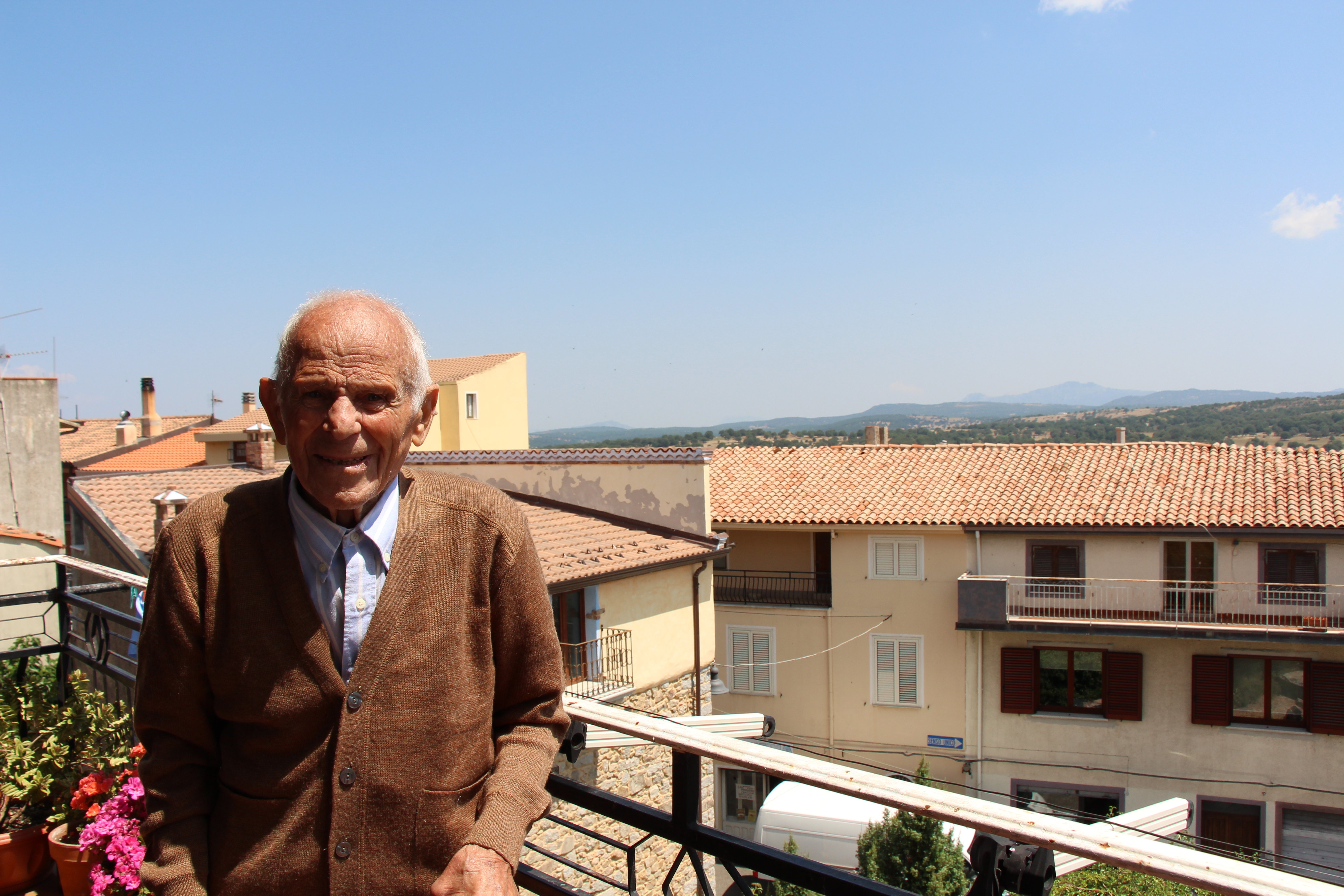In 2013, Asa Eslocker and Harriett Jameson, then master’s degree candidates in the University of Virginia’s School of Architecture, traveled to Loma Linda, California; Sardinia, Italy; and Okinawa, Japan asking one question: Why are people in these communities living longer than the rest of us?
This week, the Virginia chapter of the American Society of Landscape Architects named their resulting film, “Landscapes for Longevity,” the state’s most outstanding project in the Communications category. It is also in consideration for a national award, to be announced in September.
The film, which premiered at the Virginia Film Festival, examines the day-to-day lives, communities and landscapes of those in the so-called “Blue Zones” notable for extreme longevity. Eslocker, a former ABC News journalist, shot the film as the pair traveled from California to Italy to Japan interviewing nonagenarians and centenarians, exploring their communities and examining how community and landscape design contributes to longer, healthier and happier lives. (“Landscapes of Longevity: U.Va. Architecture Students Study Links Between Location and Lifespan,” Aug. 7, 2013)
“What really struck me was how important it is for humans, even from childhood, to live in a place that supports strong social networks. It gives you a sense of purpose every day,” Jameson said. “That is where I see the most potential in this research – thinking about how the places that we live in and our daily routines impact our psychological and social well-being just as critically as our physical well-being.”
The communities that Eslocker and Jameson studied promoted very active social lives, strong psychological connections to the natural environment and, often, rich spiritual lives.
“We know that stress causes dozens of different maladies seen in the American health care system and that about a third of Americans live with chronic stress,” Eslocker said. “What we experienced were landscapes and places that could have a very important impact on stress, as well as obesity and other concerns.
“This documentary is not necessarily a data-driven project, but it has been a strong way of communicating the important intangible and vital aspects of our public spaces and outdoor spaces around us,” he said.
“Landscapes for Longevity” was funded by U.Va.’s Benjamin Howland Fellowship, with additional support from the Center for Design and Health, the Contemplative Sciences Center, the Center for International Studies and the local Jefferson Area Board for Aging.
“It is an incredible honor to be recognized by the American Society of Landscape Architects, and it was something that I would have never really imagined when we embarked on this idea three years ago,” Jameson said. “It really speaks to the community at U.Va. being supportive of graduate students’ research and especially interdisciplinary research. That network of support enabled this project to be so dynamic and worthy of this kind of award.”
Having graduated in 2014, Eslocker and Jameson will continue screening the film and exploring partnerships to utilize their analysis, even as they both advance their careers. Eslocker is now the director of program development at the Thriving Cities Project at U.Va.’s Institute for Advanced Studies in Culture. Jameson has recently accepted a position with a landscape architecture firm in Northern Virginia.
Winning projects will be showcased at the 2015 Virginia American Society of Landscape Architects Fall Conference, to be held Sept. 19 in Blacksburg.
Media Contact
Article Information
August 4, 2015
/content/uva-film-linking-long-life-and-landscape-design-wins-statewide-award

